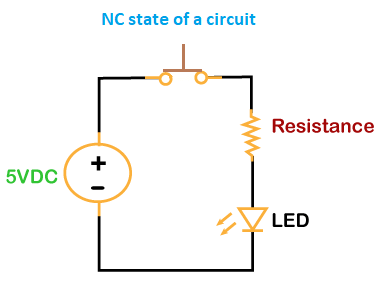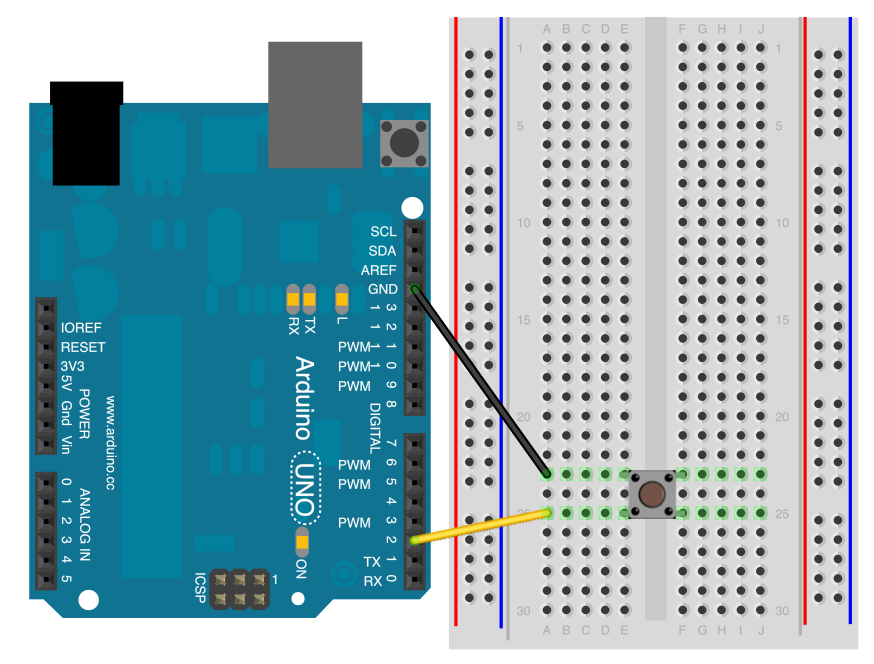
I am disclosing this in accordance with the Federal Trade Commission’s 16 CFR, Part 255: “Guides Concerning the Use of Endorsements and Testimonials in Advertising. Regardless, I only recommend products or services I use personally and believe will add value to my readers. Some of the textual links in this page may be “affiliate links.” This means if you visit the link and purchase the item, I will receive an affiliate commission.
#ARDUINO BUTTON SOFTWARE#
OUT OF OR IN CONNECTION WITH THE SOFTWARE OR THE USE OR OTHER DEALINGS IN THE SOFTWARE.ĭisclosure of Material Connection: is a participant in the Amazon Services LLC Associates Program, an affiliate advertising program designed to provide a means for sites to earn advertising fees by advertising and linking to. IN NO EVENT SHALL THE AUTHORS OR COPYRIGHT HOLDERS BE LIABLE FOR ANY CLAIM, DAMAGES OR OTHER LIABILITY, WHETHER IN AN ACTION OF CONTRACT, TORT OR OTHERWISE, ARISING FROM, Serial.Site Copyright 2014-2020 Paul McWhorter, Send comments to SOFTWARE IS PROVIDED “AS IS”, WITHOUT WARRANTY OF ANY KIND, EXPRESS OR IMPLIED, INCLUDING BUT NOT LIMITED TO THE WARRANTIES OF MERCHANTABILITY, FITNESS FOR A PARTICULAR PURPOSE AND NONINFRINGEMENT. make sure that you use the pins your buttons are wired to this declares each of our buttons and their pins This can be a great way to expand your coding knowledge. This tutorial introduces matrix-scanning tecnniques, using the SparkFun 4x4 Button Pad to build an illuminated keypad. This mechanism allows the button to return to the previous state once you stop pressing them. Push buttons contain a spring mechanism inside. We’ve added comments to each line to make it easier to understand, but we encourage you to look up and read about anything that you don’t recognize. You can use the pushbuttons easily with Arduino.
#ARDUINO BUTTON CODE#
Once you have all of this code in place, your finished program should look like the code below.

Both LEDs glow and when a push button is. Our if statement checks the state of the button using the built-in digitalRead function. Push button is basically used to control two LEDs or to turn on/off two LEDs. However, a keypad matrix is wired differently: A 4x4 keypad matrix has 8 pins divided into 4 rows and 4 columns. This function can only check on button at a time, using the variable it gets from the main loop function so that it knows which button the check. So if you would need 16 different buttons, you may need to use 16 Arduino pins. The Arduino Button Library Extension (ABLE) is a simple, lightweight button library to capture input from buttons connected to the Arduino. It is used to control the operation of any output device using the microcontroller or control.

#ARDUINO BUTTON HOW TO#
void checkPush ( int pinNumber)įollowing this, we need to assign the variable we are using and create an if statement to detect when each button is pressed. Learn how to work with an LED and a Push Button using Arduino. To start, we need to declare our function with an integer variable like the code below. This next stage is more complex than the others, as we will be creating our own function that will be dealing with a variable from the main loop function. PinMode(input1Pin, INPUT) // these lines declare each of the buttons as an input
#ARDUINO BUTTON SERIAL#
Serial.begin( 57600) // this begins the serial connection with a baud rate of 57600 This is all we need in our void setup() function. First, we will start our serial connection with a baud rate of 57600, followed by the initialization of our buttons. Int input1Pin = 2 Setting Up the ButtonsĪs with most Arduino projects, we will be using a function that will run once at the beginning of the program, called void setup(). This should be placed at the top of your Arduino project, before any of the functions. Seeing as we used Digital Pins 2, 3, 4, and 5, these are the pins we will declare with our code. Assigning Buttons to Pinsįor the first step, we need to assign our buttons to the different pins on our Arduino board.

The code for the project is nice and simple, without the need for any class libraries or other complicated programming. Programming Multiple Push-Buttons With an Arduino


 0 kommentar(er)
0 kommentar(er)
